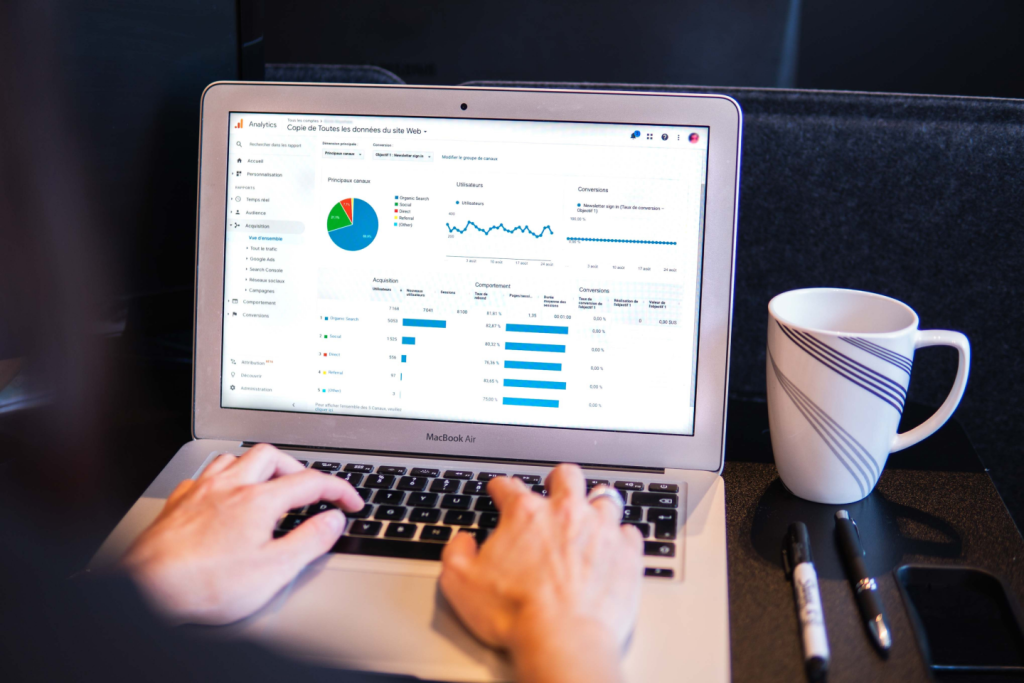How to Use Visualization Technique to Boost Focus at Work

Understanding the Power of Visualization
Have you ever found yourself drifting away from your tasks, struggling to maintain focus? You’re not alone. Many professionals face distractions that hamper their productivity, whether it’s the allure of social media, the noise of an open office, or simply the overwhelming nature of a looming deadline. Recognizing these distractions is the first step towards overcoming them, and one effective strategy to combat this challenge is through the visualization technique.
Visualization is more than just daydreaming – it involves strategically using the power of your imagination to create a mental picture of what success looks like. This mental imagery can significantly enhance your concentration and performance, leading the way to achieve your goals. Here’s how this technique can transform your work life:
- Clarity of Goals: Visualization helps clarify what you want to achieve. By picturing your objectives clearly in your mind, you can break them down into actionable steps. For example, instead of just thinking “I want to excel in this project,” visualize yourself presenting your ideas confidently to your team, engaging their attention and receiving positive feedback.
- Stress Reduction: It can reduce anxiety, allowing you to approach tasks with a calm mind. Engaging in a few minutes of visualization before your work can place you in a more relaxed state. Imagine navigating through your day effortlessly while handling challenges with grace. This can decrease tensions and enhance your overall performance.
- Enhanced Motivation: Imagining success can ignite the drive needed to tackle challenging projects. When you visualize your achievements, you create a mental rehearsal that prepares you for success. This technique is particularly useful before interviews or presentations, as you can picture yourself succeeding and gaining the outcome you desire.
Research indicates that mental imagery not only sharpens focus but also improves your ability to execute tasks. Numerous studies have shown that visualization is utilized by athletes to enhance performance, but it’s just as valuable for professionals across various industries. For instance, a sales executive might practice visualizing a successful pitch to a client or an engineer might imagine the steps to troubleshoot a complex problem.
In the following sections, we’ll delve deeper into the visualization technique and explore practical steps to incorporate it into your daily routine. Whether you’re strategizing for a presentation, planning a project, or simply looking to enhance your day-to-day effectiveness, you’ll find insights that can transform your approach to work and empower you to unlock your fullest potential.
SEE ALSO: Click here to read another article

Implementing Visualization Techniques into Your Work Routine
Once you grasp the essence of visualization, the next step is to integrate it into your work routine effectively. The practice of visualization isn’t just a fleeting moment of daydreaming; rather, it’s a deliberate approach that can anchor your focus and enhance your productivity. To leverage visualization as a powerful tool in your professional toolkit, consider implementing the following strategies:
- Set Aside Time for Visualization: Dedicate a specific time in your daily schedule to practice visualization. This could be in the morning before diving into your tasks or right before a significant meeting. Just five to ten minutes is usually sufficient. During this time, find a quiet spot to sit comfortably and close your eyes, allowing your mind to settle. This space will become an essential component in sharpening your concentration throughout the day.
- Create a Detailed Mental Image: To make your visualization more effective, focus on creating a detailed image of your scenes. Instead of generic thoughts, think specifically about your goals. For instance, if you’re preparing for a presentation, visualize the room, the people in attendance, the materials you’ll present, and most importantly, the confident way you will deliver your message. Creating a multi-sensory experience enhances retention and reinforces the positive feelings associated with success.
- Incorporate Affirmations: Pair your visualization with positive affirmations. As you imagine your success, repeat affirming statements such as, “I am well-prepared and capable,” or “I handle challenges with ease.” This not only strengthens your belief in your capabilities but also sets the tone for your day, reinforcing your commitment to your professional goals.
- Visualize Potential Challenges: One effective aspect of visualization is anticipating challenges and envisioning your responses. By mentally rehearsing how to overcome obstacles, you prepare yourself for the realities of the workplace. For instance, visualize yourself managing unexpected questions during a presentation or adapting to changes in your project timeline. This proactive mental rehearsing can significantly enhance your focus and agility on the job.
- Reflect on Your Visualizations: After your visualization session, take note of how you feel and any insights you may have gained. Reflecting can deepen your understanding of what works for you and allow you to refine your visuals over time. You may want to keep a journal to write down these reflections, which can be invaluable for tracking your progress and staying motivated.
By incorporating these strategies into your routine, you can harness the power of visualization to improve your focus at work. The journey toward mastering this technique takes practice, but the rewards in terms of heightened concentration and productivity are well worth the effort. As you become more comfortable with visualization, you will likely find yourself tackling tasks with renewed energy and a clearer sense of purpose. Let’s explore the specific techniques to enhance your visualization practice further.
How Visualization Techniques Enhance Focus
When it comes to improving focus at work, visualization techniques offer powerful tools for individuals looking to enhance their concentration and productivity. By employing mental imagery, professionals can create a clear vision of their goals, leading to increased motivation and efficiency.
| Advantages | Description |
|---|---|
| Improved Clarity | Visualization allows individuals to clarify their objectives, breaking down complex tasks into manageable steps. |
| Increased Motivation | Creating vivid mental images of success can stimulate emotional investment, leading to enhanced commitment to tasks. |
Research indicates that athletes often use visualization strategies to improve performance, a technique that can also be applied in the workplace. By practicing visualization regularly, employees can condition their minds to focus better on their tasks, leading to a more productive work environment.
To implement visualization techniques effectively, professionals can begin their day with a short meditation session, envisioning their goals and the steps required to achieve them. This practice not only helps in crafting a mental map of daily tasks but also fosters a positive mindset that primes individuals for success throughout the day.
As you explore how to leverage visualization techniques to boost your focus, consider setting aside time for regular practice. Whether it’s visualizing an upcoming presentation or a productive work session, the benefits can significantly impact your overall performance.
SEE ALSO: Click here to read another article
Enhancing Your Visualization Practice
To truly master the art of visualization and unlock its potential to boost focus at work, you need to refine your techniques and deepen your practice. Utilization of various methods can help strengthen your visualization skills, ensuring that you reap the benefits of heightened concentration and productivity. Here are some advanced techniques to enhance your visualization practice:
- Utilize Guided Visualization: For those new to the practice, guided visualization can be incredibly beneficial. Various apps and online platforms offer audio recordings or video content that walk you through envisioning your goals. This structured approach can be particularly helpful in navigating the intricacies of effective visualization, allowing you to become accustomed to shaping your thoughts. Over time, you may find it easier to transition to independent visualizations.
- Incorporate Visual Cues: Introduce physical reminders into your workspace that can enhance your visualization practice. This can involve post-it notes with inspiring words or images related to your goals placed on your desk or computer. These visual cues can serve as instantaneous reminders that trigger your mental imagery, keeping you anchored in your visualization practice throughout the workday.
- Practice Mindfulness and Meditation: Engaging in mindfulness or meditation can complement your visualization practice significantly. These techniques teach you how to harness your attention and develop a greater awareness of your thoughts. Consistently practicing mindfulness will allow you to enter a state conducive to visualization, making your mental imagery more vivid and realistic.
- Use of Vision Boards: A vision board is a physical or digital collage that represents your goals and aspirations. By creating a visually stimulating reminder of what you are striving for, you can enhance your ability to visualize success effectively. Display your vision board in a prominent place in your workspace so that you can consistently absorb the images and feelings associated with your ambitions.
- Leverage Technology: In our tech-savvy world, there are numerous digital tools designed to enhance visualization practices. Apps that allow you to build interactive mind maps or organize ideas visually can help solidify your focus on tasks. Tools like Trello or Google Keep can facilitate a creative approach to planning tasks, intertwining visualization with effective time management.
- The Power of Visualization in Sports Psychology: Drawing insights from sports psychology can be an enlightening avenue for refining your visualization practice. Athletes routinely use visualization to enhance their performance by mentally rehearsing their actions before competing. Research shows that this practice can activate the same neural pathways as actual physical performance, leading to improved execution in the workplace. Adopting similar strategies could amplify your focus in high-stakes situations at work.
These advanced techniques can provide a broader spectrum of approaches to enhance your visualization practice, allowing you to direct your focus more effectively. By experimenting with various strategies, you are likely to discover the methods most compatible with your personality and work environment. Consistent practice and refinement of these techniques are key to fully harnessing the transformative power of visualization in your work life.
CHECK OUT: Click here to explore more
Conclusion
In today’s fast-paced work environment, mastering the visualization technique is more than just a creative exercise; it’s an essential skill that can significantly enhance your focus and productivity. By implementing the advanced practices discussed—such as guided visualization, visual cues, and the use of vision boards—you can tailor your experience to align with your personal and professional goals. The integration of mindfulness practices further solidifies your ability to engage deeply with your objectives, allowing your mental imagery to become vivid and actionable.
Moreover, the benefits of visualization extend beyond individual use; when adopted by teams, it can foster a collaborative atmosphere that enhances creativity and innovation. As organizations increasingly recognize the intersection of mental well-being and workplace performance, adopting these techniques can position you on the cutting edge of productivity strategies. Research in sports psychology supports this assertion, indicating that mental rehearsal can activate the same neural pathways involved in actual execution, resulting in tangible improvements in performance.
As you explore these visualization strategies, it’s crucial to remain patient and open to adaptation. The journey to heightened focus is not a one-size-fits-all approach, and experimenting with different techniques will lead you to your most effective practice. By dedicating time to refine and integrate visualization into your daily routine, you not only enhance your focus at work but also cultivate a vision for your future endeavors. Embrace the transformative power of visualization, and watch as it elevates your professional journey to new heights.



